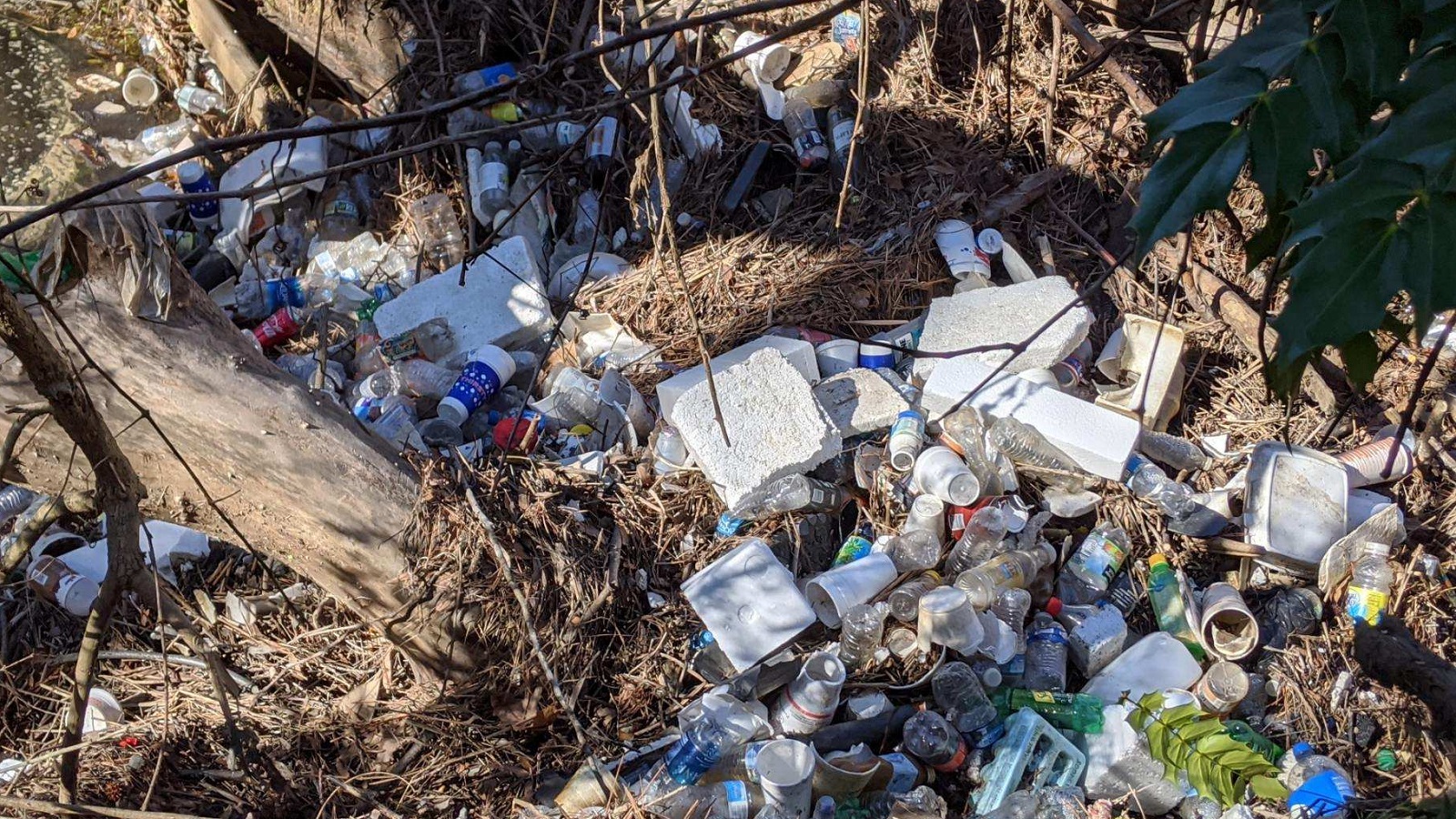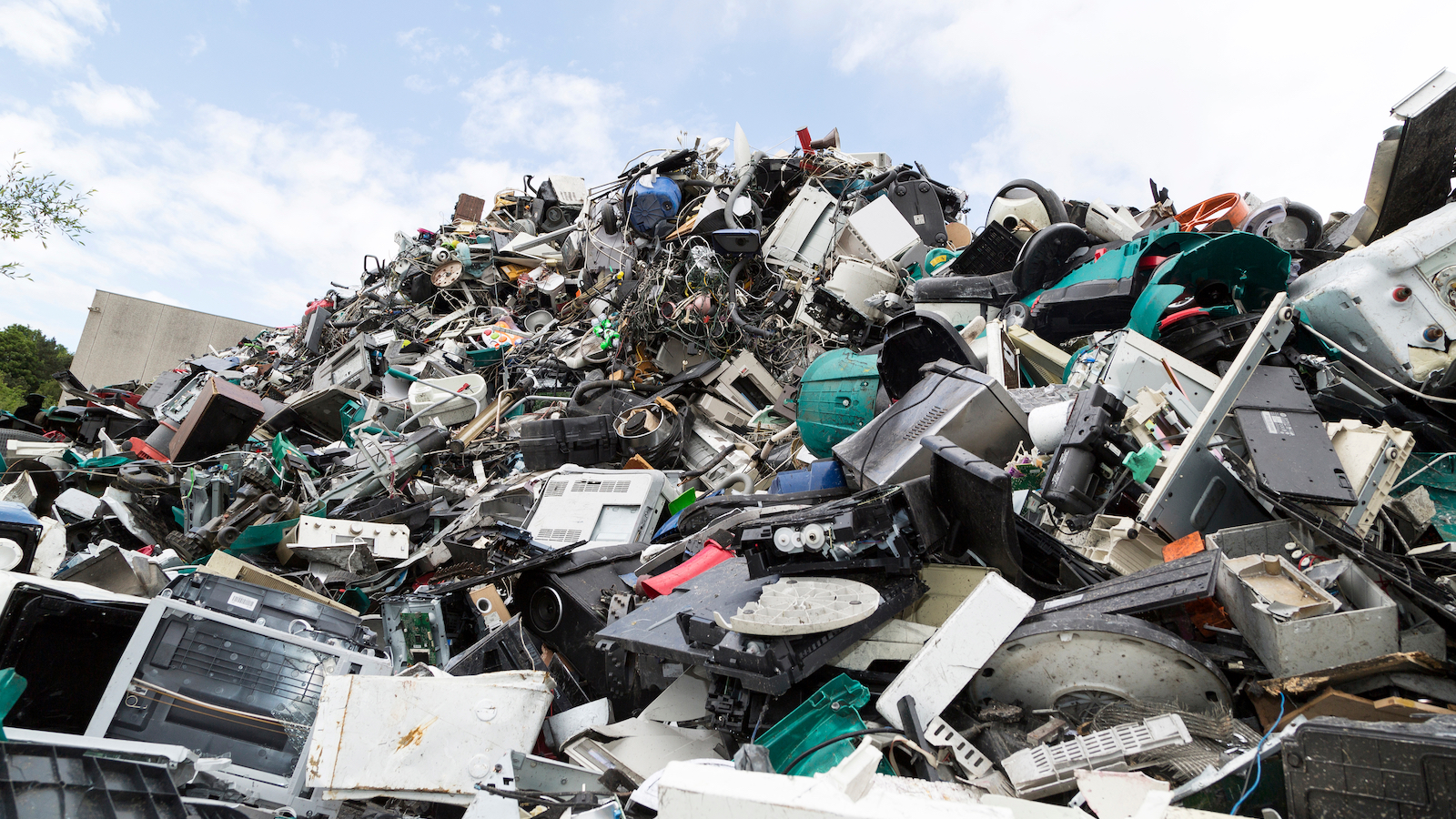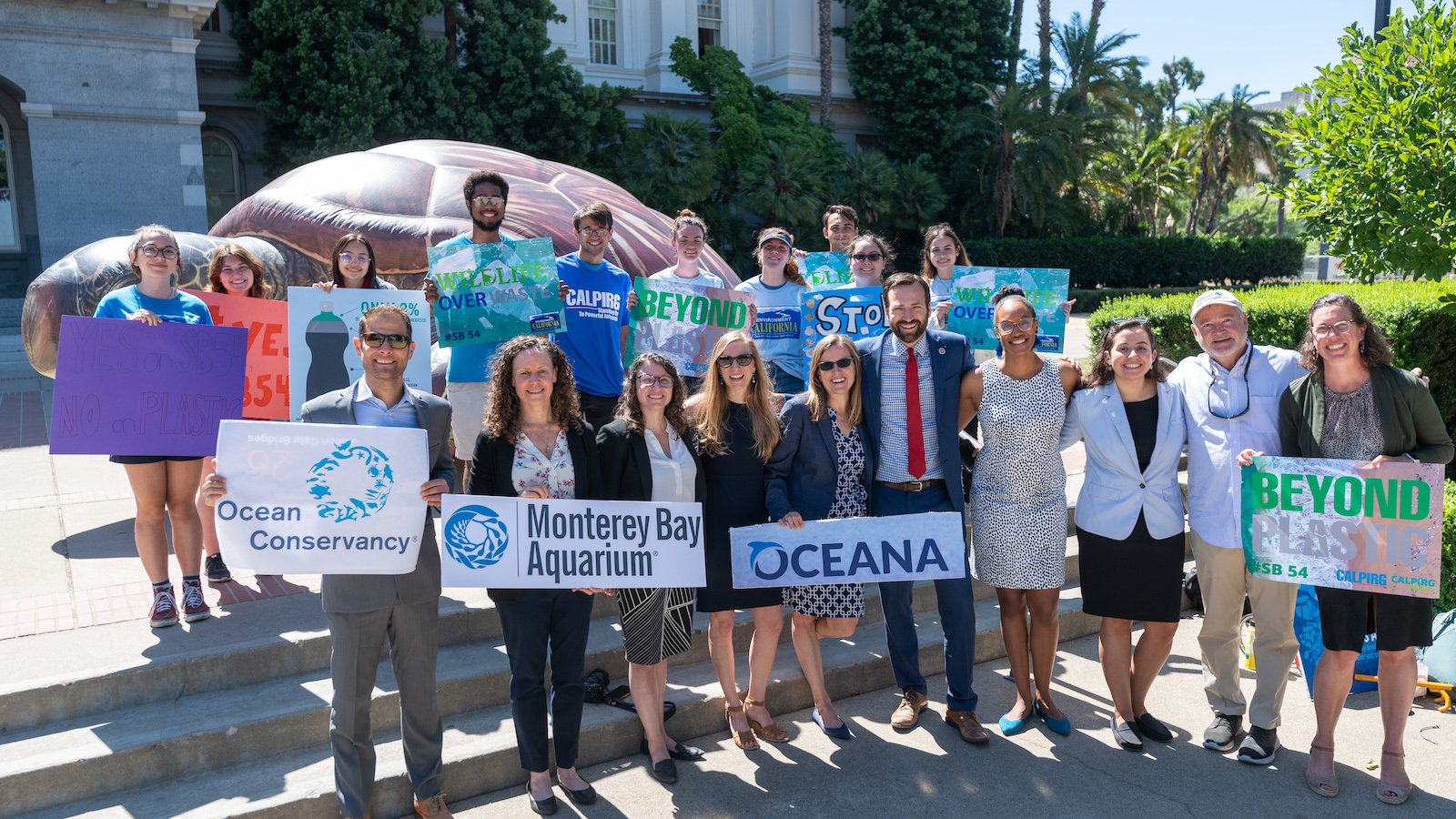
California just passed an ambitious bill to tackle plastic pollution. Here’s what you need to know.
By Jenn Engstrom, state director of CALPIRG and Laura Deehan, state director of Environment California

California just enacted an ambitious law to tackle plastic pollution. Here’s what you need to know.
Whether you’re in your kitchen or walking around your favorite park or beach, you’ll likely find yourself in the presence of plastic pollution.
The United States produces enough plastic waste every 16 hours to fill Cowboys Stadium, the largest football stadium in the country– and that amount is increasing. That plastic breaks up into smaller pieces that have been discovered in every corner of the globe, polluting the ocean and harming wildlife. Microplastics are so omnipresent in our environment that it’s estimated that we eat about a credit card’s worth of plastic every week. If we don’t stop our current trajectory, scientists say there will be more plastic in the ocean than fish by 2050.
How did it get this way? It’s not because people have been clamoring for more plastic in our lives. In fact, it’s become nearly impossible to avoid plastic in packaging and consumer products.
Even if you try to recycle that plastic — dutifully checking the number in the triangle on the bottom of the package, making sure your city or town accepts it for recycling — there’s still a chance that it will ultimately wind up as waste. Less than 15% of all plastic gets recycled in California.
It’s easy to blame the plastic waste crisis on litterbugs or people who don’t recycle. Easy, but wrong. The real responsibility for the plastics crisis lies with the companies that manufacture these products in the first place.
In recent years, nearly a dozen states have considered producer responsibility bills for packaging, with Maine, Oregon, and Colorado putting the first three laws on the books in the last few years.
This year, it’s California’s turn. The Plastic Pollution Production Responsibility Act, introduced by Senator Ben Allen, will greatly reduce the amount of plastic that ends up in our environment by mandating significant reductions in single-use foodware and packaging, requiring that those items actually be recyclable or compostable, and holding producers financially responsible for the plastic they put into our communities.
Let’s look at some of the highlights of what the new law does:
Require all single-use plastic packaging and foodware be actually recyclable or compostable by 2032.
Right now, producers of plastic packaging and foodware can put whatever they want on the market, regardless of where it ends up, leaving you and me with limited choices when shopping for consumer goods and then footing the bill to manage the waste. And even though a lot of products have the “chasing arrows symbol” on them, it doesn’t mean they can be recycled. Less than 15% of plastics are actually getting recycled in CA.
Under this new law, producers of single-use plastic packaging and foodware will be required to design their products to actually be recyclable or compostable, meaning you could throw these products into the blue bin, knowing that they will be recycled or composted.
Require that all single-use plastics meet a 65% recycling rate by 2032.
Right now, a vast majority of single-use plastics end up in the landfill or the environment, and there’s no accountability for producers to meet any kind of recycling rate.
Under this new law, producers of single-use plastics have to hit a minimum recycling rate of 65% for their products by 2032. And recycling does not include incineration or other harmful forms of disposal like “chemical recycling.”
Require producers to reduce single-use plastic packaging and foodware by 25%, both by weight and unit, by 2032.
Right now, for the most part, producers can use as much single-use plastic packaging as they want, with few limitations for what they can put on the market. While California has banned single-use plastic grocery bags and over 100 cities and counties in California have passed local ordinances banning polystyrene foam foodware, no statewide law exists limiting other plastic packaging.
Under this new law, producers will be required to reduce the amount of plastics they use in their products, resulting in less packaging and less single-use plastic products by 25%. As the saying goes, if your bathtub is overflowing, you wouldn’t start by bailing out the water, you’d start by turning off the tap. This piece of the bill is the “turning off the tap” that will reduce the amount of plastics entering the market in the first place, hopefully resulting in less production of plastics overall.
Require that producers of plastic packaging take financial responsibility for the full lifecycle of their products through a producer responsibility program, with strong oversight and enforcement by CalRecycle.
Right now, product manufacturers don’t have to absorb the enormous costs their products inflict on the rest of us. Producers don’t have to pay for the costs of collecting and transporting the trash their products become. They don’t have to pay employees to pick up plastic litter from parks and beaches — that’s left to us. And they don’t have to pay the public health costs of pollution from plastic trash in our incinerators and landfills. As long as producers’ responsibility for their products ends the moment they’re shipped away, they are going to keep making disposable plastic junk.
Under this new law, producers will be financially responsible for managing the waste their products become. Producer responsibility programs work because they change the incentives that make wastefulness so cheap. When manufacturers are held responsible for their products at the end of their lives, they tend to make different choices when designing those products in the first place: making them more reusable, repairable, recyclable and resilient.
Require plastics producers and plastic resin manufacturers to pay $500 million a year towards environmental cleanup.
Right now, plastics producers and manufacturers have absolutely no financial responsibility or accountability to the global environmental catastrophe their products are causing.
Under this new law, producers will be held accountable to the environmental and public health harms caused by their products by requiring that they fund environmental cleanup efforts, which will result in cleaner, healthier communities.
Ban expanded polystyrene foodware by January 1, 2025 unless industry is able to demonstrate a 25% recycling rate for the prior year, as determined by CalRecycle.
Right now, one of the worst forms of single-use plastics, polystyrene foam, can be used as takeout containers and cups (outside of the cities that have banned it). These products are typically not reusable or readily recyclable, and scientists estimate that they take hundreds of years to degrade, if at all.
Under this new law, unless the plastics industry can find a way to recycle this product (like, actually recycle it, not just turn it into fuel), it’s banned.
This bill is a monumental step forward and the culmination of more than four years of organizing and advocacy.
But how did we get here? How can we still win big change in an era when it seems like we can barely ever make any progress?
In 2016, our organizations and others successfully defended the statewide plastic bag ban after passing it in 2014. But we always knew we would need to tackle other sources of single-use plastic, from straws to foam cups and takeout containers. Californians of all political persuasions agree the issue of plastic in our oceans is a “big problem,” and together our organizations set out to build the political will to take bold action and address another huge source of plastic pollution.
For decades, CALPIRG and Environment California have worked to elevate the wellbeing of our people and the health of our planet over the production and consumption of more stuff. The Plastic Pollution Producer Responsibility Act reflects these values.
What we do here in California matters. We can chart a path for other states and nations to follow by transforming our throwaway culture into a circular economy.
That’s why CALPIRG and Environment California teamed up with other allies to ensure decision-makers overwhelmingly heard from the public over the voices of the plastics industry.
- Our teams organized news conferences and lobby days calling on legislators to pass plastic reduction legislation. At one event, we brought together bill sponsors and a crew from Frontline PBS as part of their coverage of the rise of the plastics industry.
-
Environment California and CALPIRG canvassers have had hundreds of thousands of face-to-face conversations with individuals across the state about the issue of plastic in our oceans and how they can take action on solutions.
-
CALPIRG and Environment California collected more than 82,000 signatures on petitions calling on elected leaders to act on plastic pollution.
-
CALPIRG Students organizers and student volunteers built support in key districts, holding lobby days with student volunteers, organizing call-in days on college campuses, putting on educational events, panel discussions, rallies and educating and engaging tens of thousands of students up and down the state, and passing local plastic reduction policies at the university and city level.
We’re thankful to everyone who helped make this victory happen.
Topics
Find Out More


PIRG’s warmest wishes for a safe and happy new year

What is e-waste?

